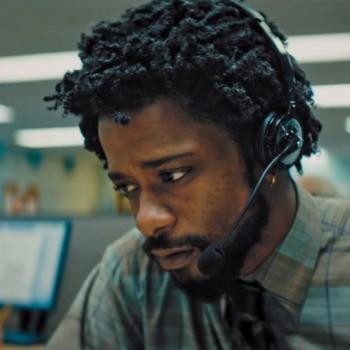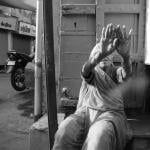Yesterday morning, readers of the New York Times opened their Sunday papers to find John Turner’s op-ed, “Why Race Is Still a Problem for Mormons.” Turner, an assistant professor at George Mason University and the author of the soon to be released, Brigham Young: Pioneer Prophet, provides a careful and concise history of the Church of Jesus Christ of Latter-day Saints’ (LDS) often troubling relationship with people of African descent. Turner also argues why the contemporary church (and its membership—especially those running for high elected office) could benefit from more frank talk from the “brethren” about why the LDS Church abandoned its race-based exclusionary policies, and how Mormons should understand this past.
Turner’s piece came just days after another hot-button revelation from the always expanding “Mormon beat.” Last Thursday, The Huffington Post’s Andrea Stone reported a new Helen Radkey discovery, unearthed in the electronic archives of the LDS Church’s Family Search database: the names of some deceased family members of the newly selected GOP vice presidential candidate, Paul Ryan—whom Mitt Romney himself pointed out is a “faithful Catholic”—appear on a list for future posthumous baptisms. And some of Ryan’s kin, including Ryan’s beloved father, might have already been baptized by proxy.
There are some superficial parallels between these two stories. Both touch on two of the most sensitive topics in Mormonism (namely, race and proxy baptisms for the dead). And for that reason, both stories worked some Mormons—and perhaps even more Mormon detractors—into a lather.
But I want to explain it is vital to describe the differences in method and motivation between these two stories. This is vital because—and I’m mostly addressing Latter-day Saint readers—in these differences what emerges is an answer to the question: “What does it mean to be a ‘friend,’” and specifically, “What does it mean for a scholar of Mormonism to be a ‘friend’ to the Latter-day Saints?”
My totally unscientific survey of responses to these two stories comes from reading my Facebook friends’ (or more often, friends of friends’) comments, which appeared after these two stories were posted and shared over the weekend. (Yes, the irony is not lost on me that a Peculiar People post on ‘friends’ is largely inspired by the social network that has, in many ways, redefined what the word ‘friend’ means).
Let me summarize (and sanitize) many of the hundreds of comments these two stories received. From a certain segment of Mormon readers, the response was more or less this: “How dare those ‘Antis’ lecture us about who we are and what we do!” (To be sure, there is some justification for such response, due to the long history of Mormon persecution). And from those “Antis,” (real “Antis” I mean) a noxious chorus, “Look at those Mormons being cultish and racist!” erupted.
Yet, at least for me, this is where the similarities end.
First, there is the question of method.
In his article, Turner makes the point that the “priesthood ban” (the shorthand for the racial exclusion of black Mormons, though the restrictions also affected African American women too) did not begin at the founding of the church. Instead, the ban has a human history: It was an evolving practice, then policy, then doctrinal fixture, articulated and defended by prophets from Brigham Young to Joseph Fielding Smith well into the twentieth century.
Turner then contextualizes the ban, placing it in the history of American religion. “Mormons have no reason to feel unusually ashamed of their church’s past racial restrictions,” Turner writes. “Their church, like most other white American churches, was entangled in a deeply entrenched national sin.” It is perhaps only the priesthood ban’s “duration,” Turner argues, that is unusual, and perhaps, yes, shameful.
What Turner does—contextualize and historicize—Radkey does not. She digs and then dumps, leaving the analysis to others (however, it should be acknowledged that with the church watching her so carefully—after all, Radkey is responsible for many of the muckraking discoveries of proxy baptisms of Holocaust victims, Gandhi and a myriad of celebrities—this is quite a feat in itself).
Second, motivations. I don’t claim to know what motivates Radkey (I’ve never met her). My understanding is that she considers herself a whistleblower, who, at best, works to hold the LDS Church accountable to its own policies about who is eligible to submit certain names for temple work, and what names should never be submitted for such rituals (e.g. Holocaust victims). [1]
I believe whistleblowing is often a brave and important act. Uncovering misdeeds in governments, industries, and churches can serve to protect the public, the consumer, and the believer from abuse, which is often protected, or covered up by bureaucracies.
But what if your goal is to critique the institution itself, not to tear it down, but to better it, so it can more effectively serve its own constituencies?
This is, I believe, what Prof. Turner, and many other non-Mormon scholars, myself included, intend to do, especially when we write about Mormonism for the popular media.
I would guess that for most readers of Peculiar People, Turner provides little new historical insight into the troubling history of race and Mormonism. But breaking new ground isn’t what the op-ed page of The New York Times is for. Instead, Turner offers a cautious challenge to the LDS leadership (and its membership) to more seriously grapple with the moral as well as historical reasons why the ban was ever instituted in the first place, and why it came to be removed.
I believe that Prof. Turner—and a growing number of non-Mormon scholars of Mormonism like him—have earned the right to make such challenges. After all, such scholars have dedicated, hours, days, even careers to the careful study of Mormon history.
What we find in these lifetimes spent in the archives is sometimes troubling, sometimes heartwarming, but most often mundane. Yet what we always find is human. And it’s our duty as scholars to capture this comprehensive humanity.
What also happens in the archives (at the Church History Library, in particular) or in more virtual communities like this one, is that non-Mormons become friends with Mormons. We grow to respect Mormons as thinkers, scholars, and believers (and hopefully this is reciprocated).
Friends stand up for their friends against bullies (non-Mormon scholars are more often called Mormon apologists by Mormon haters, than anti-Mormons). But friends are more than sycophants, too. As Mormon Studies continues to grow past its sectarian origins, this hopefully will become more apparent, and also more recognized.
[1]. I too have investigated troubling findings in the Family Search databases. I leave it to the readers of my article at Slate to determine what, if anything, separates my work from that of Radkey’s.











